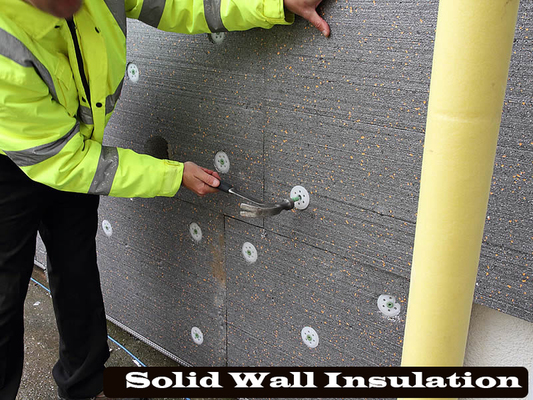How do you insulate a solid wall?

Solid walls let twice as much warmth escape as cavity walls, so insulating them bodes well. Nonetheless, while cavity walls can be insulated rapidly and inexpensively, solid wall protection is a costly endeavor. You can insulate either within or the outside of the wall – the two strategies have advantages and hindrances.
How can I tell if my home has solid walls?
In the event that your house was worked before 1920, it presumably has solid outside walls instead of cavity walls, which just came into boundless use during the 1920s.
For block assembled homes, building depot near you can likewise tell by checking the thickness of your outer walls. Do this by estimating them in an outer entryway or window; if a wall is under 10 inches thick, it's most likely solid.
Stone-assembled houses can have a lot thicker walls, however these are once in a while cavity walls.
How much does external wall insulation cost?
The expense of external wall insulation remotely is around £100 per square meter, so it can extend from £8,000 for a little level up to £22,000 for an enormous withdrew house, and it could take numerous years to acquire back your speculation. These expenses change altogether, contingent upon how much work you're having done, how simple it is for installers to get at the walls, etc.
For interior walls it could be £3,500 - £14,000, which is clearly impressively less, however you'd even now require a long time to win your cash back.
How could I reduce the costs of solid wall insulation without compromising on quality?
The expenses cited above are for paying master installers to go to your home, insulate all your outside walls, rearrange a short time later and supplant everything similarly as it seemed to be.
Be that as it may, you may have the option to decrease these expenses by joining the work with other structure or adorning ventures. For instance, in the event that you pick outer protection, you'll need platform – yet in the event that you consolidate the outside wall protection venture with take a shot at your rooftop, or painting the outside woodwork, you could spread the framework costs across the two activities. In the event that your home's outside walls need fixing or repointing, you could consolidate this with the outer house protection work and cut back on costs.
In the event that you decide to insulate the walls inside, you could spread the cost and diminish the interruption by doing it each room in turn.
What is internal wall insulation?
Solid walls can be types of insulation inside by fitting inflexible sheets to the wall, or building a different stud wall and filling the hole with insulating material – for instance, mineral fleece fiber.
Inflexible protection boards are around 2 ½ - 4 inches thick, and made of insulation plasterboard upheld with protection material, generally frothed plastic. They're regularly fixed on to the wall with strips of plastic or glue, or fitted to secures if the walls are knotty and lopsided. The installer will at that point add additional fixings to hold the sheets firm, and seal the joints between the sheets.
Stud walls are made of metal or wooden edges, which are joined to the wall. When the protection material has been embedded into the hole between the studwork outline and the wall, the internal wall insulation is put and would then be able to be painted or wallpapered. On the other hand, it could be secured with unbending protection sheets, making your protection significantly increasingly powerful and your running costs lower, yet further diminishing the size of your room.
What are the advantages of insulating internally?
It's normally more affordable than outer protection.
It's simpler to introduce, and there's no requirement for framework.
It won't change the external appearance or character of your home, so it's progressively reasonable for outwardly alluring structures and period properties.
It's additionally progressively appropriate for pads and maisonettes, as you can scarcely utilize outer protection for only one unit in a square.
It can likewise be worthy for structures in Conservation Areas where there are regularly severe principles about the sort of changes you can show up of your home.
What are the disadvantages of internal insulation?
Before you start, you'll have to sift through any sodden issues, as rising or entering soggy can demolish the impacts of your protection.
It will diminish the size of the room, as it will acquire the wall by around 4 inches.
It's very problematic, as the installers will be working in your home.
You'll need to do a great deal of preliminary work, as you'll need to move furniture, pull away any rug laid up to the wall, and expel avoiding sheets, entryway outlines, wall light fittings, radiators, pipework, coving and cornices.
And a short time later you'll need to re-lay the rug in the wake of cutting 4 inches or so from the edge, and supplant all the apparatuses and fittings you evacuated.
If the wall's surface is knotty and lopsided (this is frequently the situation in more established structures, especially in provincial regions), it should be leveled off with mortar or render before fitting inflexible protection sheets.
If you utilize inflexible sheets, it might mean your walls are not, at this point reasonable to help overwhelming things like wash bowls, kitchen units or radiators. In any case, you can get unique fixings for this, and on the off chance that you pick stud wall protection, that ought to be sufficiently able to help these installations.
It could harm or conceal period highlights.